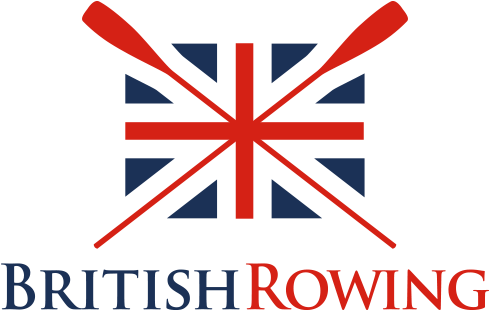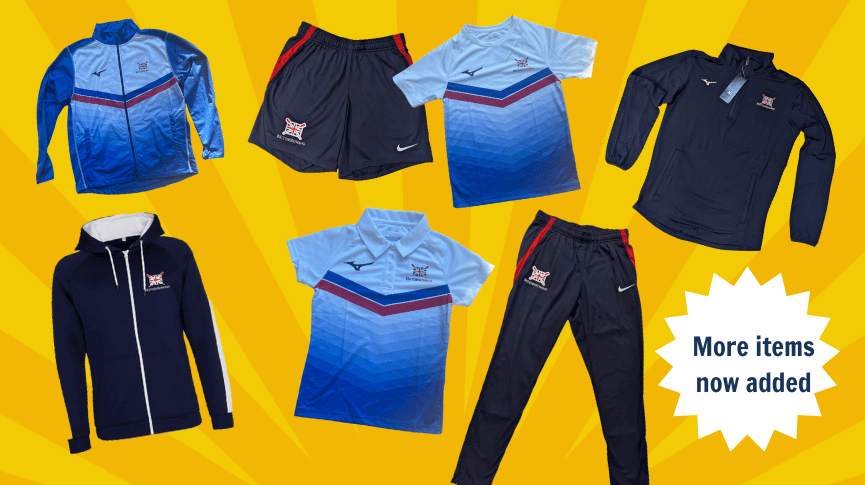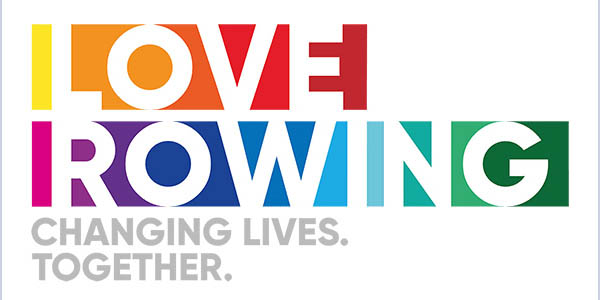Glossary of Rowing Terms
From the difference between a quad and a four, to ‘rigger jiggers’ and ‘rating’, get up to speed with common rowing terms
A Glossary of Rowing Terms
A | B | C | D | E | F | G | H | I | L | M | N | O | P | Q | R | S | T | W
Symbols
x + - in boat type codes
x means sculling (2 blades per person). If there isn’t an x, it’s a sweep (1 blade per person) crew.
+ means coxed. If there isn’t a +, the boat is coxless. For sweep boats, – means coxless.
So a 4x+ is a coxed quadruple scull, and a 4x is a coxless quad. A 4+ is a coxed four and a 4- is a coxless four.
Adaptive Rowing
The term British Rowing uses for a type of rowing that can be done by anyone with a disability.
Aft
Towards the stern.
ARA
The Amateur Rowing Association – former name for British Rowing.
B Back to top
Back down
Reverse rowing used to manoeuvre the boat backwards or for turning.
Backstay
The back brace of a rigger that locks the pin in position.
Back stops
The position at which the rower sits with their legs straight and oar handle to their chest.
Blade
See Oar.
Button
See Collar.
Bow
1. The front of the boat. 2. Rower that sits in the seat position nearest the front of the boat.
Bow Ball
Ball shaped safety cap that sits over the bow end of the boat. Compulsory on all rowing boats for safety of other water users.
Bow Loader
A boat where the cox sits at the front (bow) of the boat.
Burst
A small number of strokes (usually less than a minute) taken at full pressure in training.
C Back to top
Canvas
The covered section at the bow and stern of the boat. Often used as a description of how much a race was won or lost by.
Catch
The moment at which the spoon of the oar is immersed in the water and foot pressure applied. In indoor rowing this point in the stroke is also referred to as the Start.
Cleaver
The most common type of oar, which has a spoon in the shape of a meat cleaver.
Collar
The plastic circular section of the oar that is pressed against the swivel when rowing.
Cox
Person who steers the boat by using the steering mechanism. Can be positioned in either the stern or bow of the boat.
Coxless
Boat without a cox.
Crab
When the oar becomes caught in the water at the moment of extraction and the oar handle strikes the rower. Often causes unintentional release of the oar and significant slowing of boat speed. When this happens the phrase is to ‘catch a crab’.
Double
Double scull: a boat for two scullers.
Drive
The part of the stroke between the catch and the extraction when the oar is in the water and propelling the boat.
Ergometer/Ergo
Indoor rowing machine used for training or indoor racing.
Extraction
The removal of the oar from the water by application of downward pressure to the oar handle. Also known as the Finish (of the stroke).
Feather
Oar spoon is parallel to the water. This is the position of the oar spoon for the recovery section of the stroke. Rowers must be careful to fully extract the oar before feathering.
Fin
A piece of metal or plastic attached to the underside of the boat towards the stern. Provides directional stability by preventing sideways slippage.
Finish
The last part of the stroke where the oar handle is drawn in to the body. Force must be applied to the spoon right to the finish so that water does not catch up with the spoon.
Firm
Term used to suggest that the rower is applying full pressure to the power phase of their rowing stroke.
Fixed Seat
A description used to differentiate a boat without a sliding seat mechanism.
FISA
The Federation Internationale des Societes d’Aviron is the international rowing federation, now known as World Rowing. The Federation is responsible for all international racing and rules. Organises a series of three world cup regattas, an annual World Championship and the World Coastal Championships.
Foot rest
The place on a rowing machine where you put your feet. It can be adjusted to suit your height or flexibility and has straps to secure your feet in place.
Foot stretcher
A bar inside the boat to which the footplate is attached.
Four
Boat for four sweep rowers. Can be coxed or coxless.
Front stay
The front brace of the rigger that secures the pin in place.
Front stops
The position at which the rower sits with their shins vertical at the front of the slide.
Gate
The metal bar, tightened by a screw that closes over the swivel to secure the oar.
Gearing
Term used to describe the ratio of inboard to outboard on the oar that determines how much power the rower can apply through the water.
Gunwale
The upper edge of the side of a boat.
Head Race
Race in which crews are timed over a set distance. Usually run as a processional race rather than side by side.
Heel Restraints
Attached to the heels of the shoes and to the foot plate. Compulsory safety feature that helps the rower to release their feet from the shoe in the event of a capsize.
Height
A rigging measurement. The vertical distance from seat to point of work at the centre of the bottom edge of the swivel.
Inboard
The length of the oar from the end of the handle to the button at the point where it will sit against the swivel.
Leather
The sleeve on an oar (blade) which protects the loom from being damaged by the pins.
Length
Length of stroke -the arc through which the oar travels when it is in the water from catch to finish.
Loom
The shaft of the oar from the spoon to the handle.
Macon
Type of oar that has the traditional tulip shaped spoon.
Mainstay
The centre bar of a rigger.
Novice
Someone who has very little rowing experience.
Oar
Lever used to propel a rowing boat. Also known as a blade.
Outboard
The length of the oar from the tip of the spoon to the button at the point where it will sit against the swivel.
Overlap
The amount by which the scull handles overlap when a rower holds them horizontally at right angles to the boat.
Para-Rowers
Rowers who have successfully been through the classification process and have been assigned a Sport Class. These rowers are eligible to compete at all levels including the corresponding Rowability grouping and LTA, TA or AS events up to and including the Paralympic Games.
Pin
The spindle on which the swivel rotates.
Pitch
Angle of inclination of the spoon to the vertical during the propulsive phase of the stroke. This is dictated by both the stern and lateral pitch.
Points
Awarded to rowers for winning races. Number of points determines the status of the rower. See the British Rowing Rules of Racing for more details.
Pontoon
Stabilising float that attaches to the rigger.
Port
Left hand side of the boat in direction of travel (stroke side). Often marked by a red stripe on the oar.
Posture
Position of back and shoulder muscles during the stroke cycle.
Pressure
The amount of effort applied by the rower to the power phase of the stroke (usually light, ½, ¾, firm or full).
Quad
Boat for four scullers.
Rate or rating
Number of strokes rowed in a minute (also see stroke rate).
Ratio
The ratio of the time taken for the power phase to that of the recovery phase of the stroke.
Recovery
The part of the stroke phase between the extraction (finish) and the beginning or catch when the oar is out of the water.
Regatta
A knock-out competition usually involving heats, semi-finals and finals for each event. Boats compete side by side.
Repechage
In regattas a system that enables losing crews of a heat to race again, and go through to the finals.
Rhythm
The regularity and consistency of a crew’s stroke pattern.
Riggers
Metal outrigger attached to the outer shell of the boat next to each seat that supports the swivel and the pin. There are currently several different designs of rigger from two or three stay metal or carbon tubing to metal or carbon wings.
Rigging
The way in which the riggers, slides, swivel, pins, foot plate, oars and sculls can be adjusted to optimise rower comfort and efficiency.
Rigger jigger
A small double-ended spanner mainly used for attaching and adjusting riggers. One end is 10mm and the other is 13mm diameter.
Rowability
Rowers who have been through the classification process and have been confirmed as meeting a minimal disability, but are not eligible for Para-Rowing. These rowers will have been assigned a boat grouping and are eligible to compete in all British Rowing competitions up to but not including the British Rowing Championships.
Rudder
The device under the boat which when moved causes change of direction. Linked to the steering mechanism.
Running start
A racing start undertaken with the boat already moving.
Saxboard
The sides of the boat above the water line made to strengthen the boat where the riggers attach.
Scull
The oar used for sculling. Smaller and shorter than a sweep oar.
Sculling
Rowing with two oars.
Shell
The hull of the boat. Made from either wood or a synthetic material.
Slide
Two metal runners on which the seat travels.
Sleeve
Fixed to the loom of the oar and circled by the collar. Collar can be moved along the sleeve to adjust the gearing of the oar.
Span
The distance between the centres of the port and starboard side pins on a sculling boat.
Split
Term used to describe the pace an individual is rowing, referenced as the time it takes to row 500m. It is one of the units you will see on a rowing machine monitor and will displayed as a time 0:00.0/500m.
Spoon
The end of the oar which enters the water. Usually painted in the colours of the club represented by the rower.
Spread
Distance between the centreline of the shell to the centre of the pin in a sweep boat.
Square or squaring
To turn the oar so that the spoon is at 90º to the water. This action should be done early enough during the recovery to ensure good preparation for the catch. See also Feathering.
Standing start
A racing start done from stationary.
Starboard
Right hand side of the boat in direction of travel (bow side). Often marked by a green stripe on the oar.
Stake boat
An anchored boat or pontoon from which rowing boats are held prior to a race starting.
Status
Levels of racing determined by the number of times a rower has won a race. See the British Rowing Rules of Racing for more details.
Stern
The end of the boat that travels through the water last.
Stern loader
A boat where the cox sits at the back (stern) of the boat.
Stroke
1. One cycle of the oar. 2. The rower who sits closest to the stern of the boat in front of all the others and is responsible for the rating and rhythm of the boat.
Stroke rate
The number of strokes rowed in one minute. Sometimes referred to simply as “rate”.
Sweep
Rowing with one oar on one side of the boat.
Swivel
The U shaped plastic rotating piece mounted on the pin in which the oar sits whilst rowing.
Tap down
To the lower the hands at the end of the stroke to remove the spoon from the water.
Tap turn
Term used to describe a method of turning the boat where each rower uses a forwards or backwards rowing action with their arms only.
Thole pin
In fixed seat boats the oar will lie in between 2 pins.
Thwart
Structural cross piece forming a seat in a traditional rowing boat.
Trestles
Portable stand used to support a boat for rigging, washing and admiring.
Washing out
Allowing the oars to become uncovered in the propulsive phase of the stroke, usually towards the end of the stroke.



